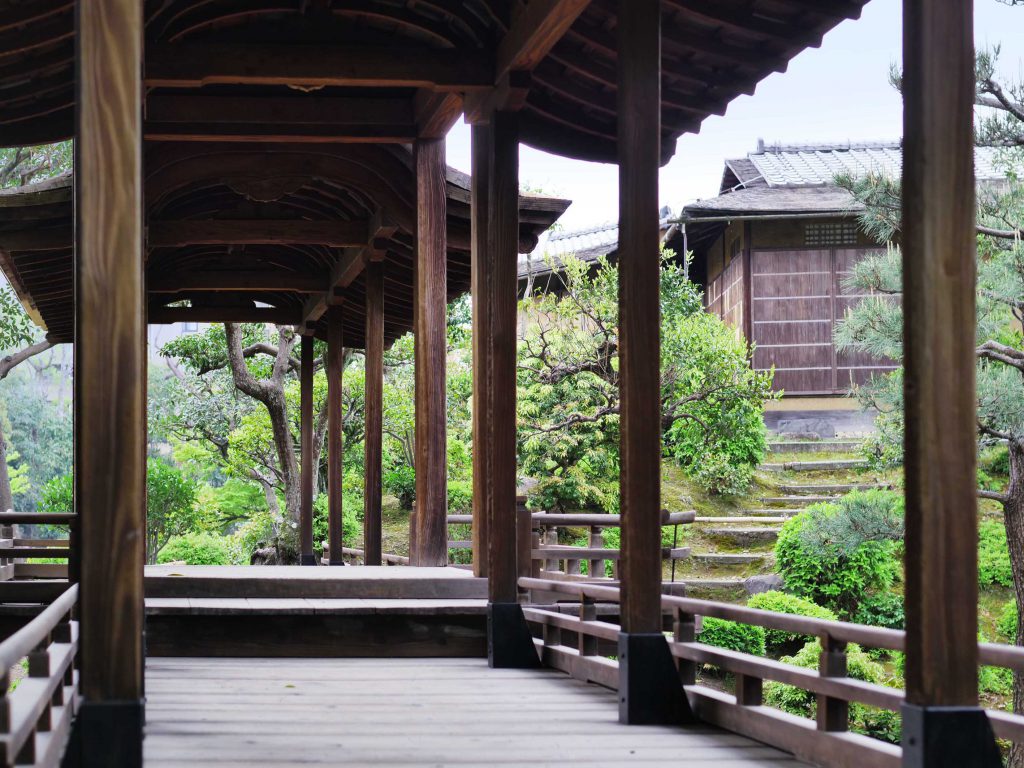
We have spent a long flight – and many hours of sitting still. Our first day in Japan shall be a welcome contrast to this. We are not headed for certain sightseeing spots, we just plan to walk a lot and immerse ourselves into the atmosphere of Kyoto. Somewhere where it’s green we want to take our time to enjoy the atmosphere.
First, we pass the garden “Shosei-En“. Until now we only know it from outside. Several times, we had walked passed it, on our way to Kamo-gawa, but we had no chance to visit the garden from inside yet. Today we take our time to explore the garden in detail. For us, of course, it’s especially interesting that there are even four tea houses, despite the small size of the park. Unfortunately, we can only see them from outside because today – as most of the time – the tea houses are not open for public.
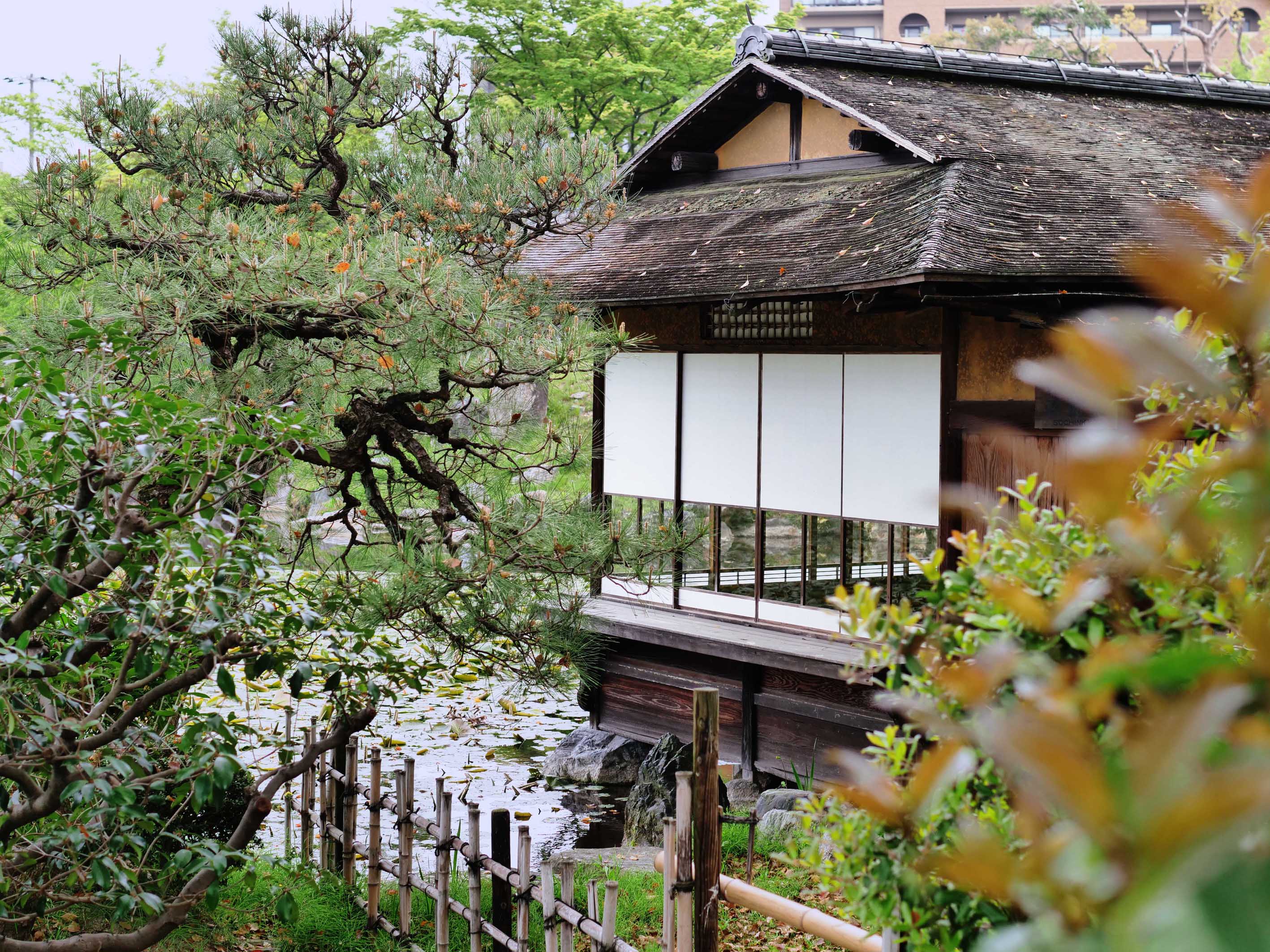
The Sochin-kyo tea house is situated a little bit away, on the outskirts of the park. It has two tea rooms. The small tea room, with a size of only three tatami mats, is connected to a veranda, which leads to a small lake outside. From here, one looks out across the small lake, to the tea house “Shukuen-tei“.
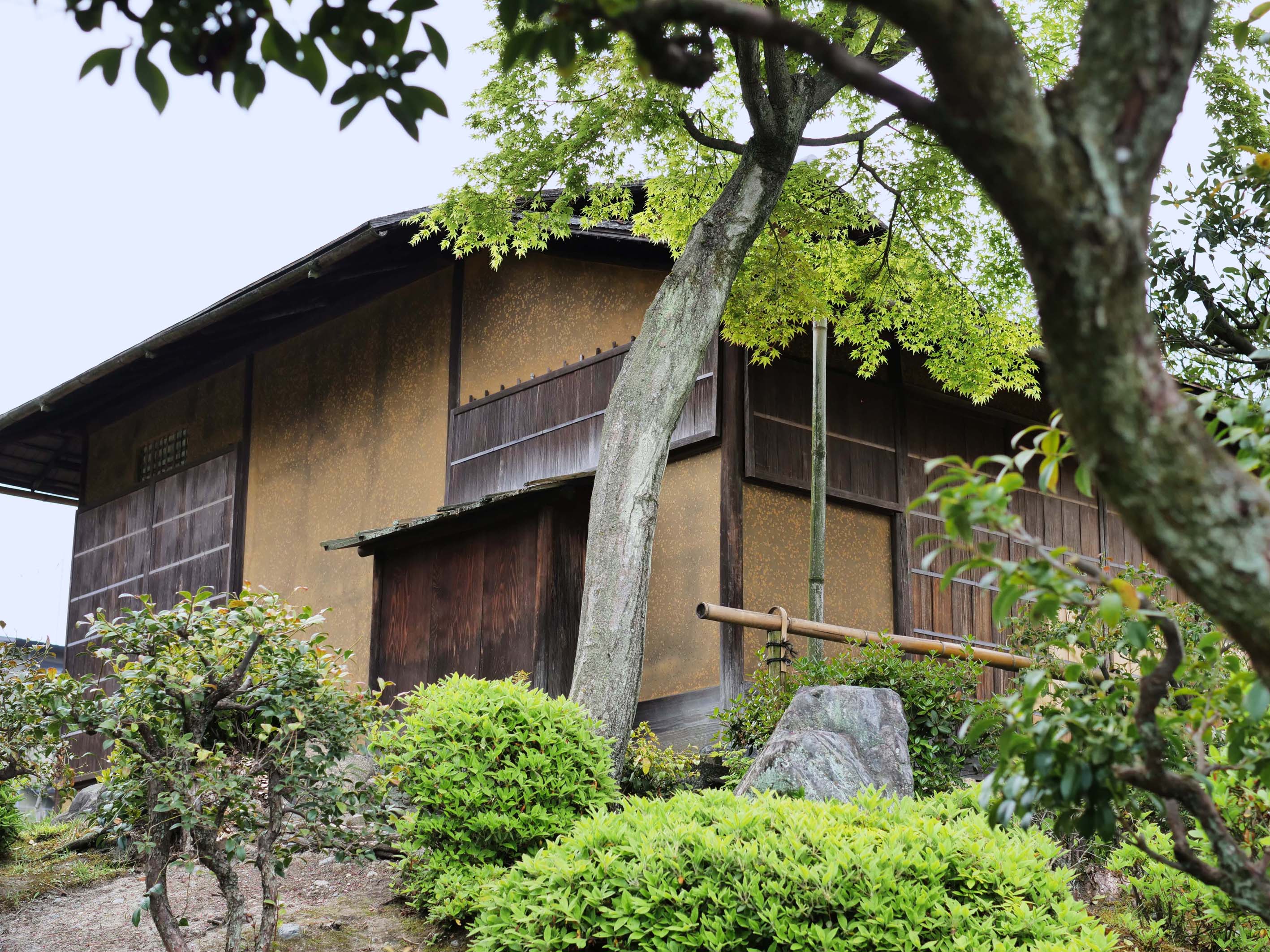
The Shukuen-tei tea house is situated on a small hill in the middle of the small lake. The tea house has two tea rooms which are diagonally positioned and connected by a corridor. The small, three-tatami-sized tea room is a little bit elevated, and creates a phantastic view of the garden. At the foot of the tea house, we also find parts of the old water place Shiogama. In the past, the water for the tea preparati on was taken from here. Now, however, the well has dried up.
The tea houses were not only used for the tea ceremony with Matcha but also for Sencha-do. This was the preferred way of enjoying tea for the high society in Kyoto. For this, the garden “Shosei-En“ was a special place in that time, and still is a symbol of Japanese tea culture, although unfortunately the tea houses are only rarely open for public. There are only few gardens where one can walk by as many as four tea houses. Besides tea, in that time, in all four tea houses they served Sake and certain dishes, as well, as it was common for the tea ceremony.
Our path leads us further in the direction of Higashiyama, the temple district. In this area, one still finds lots of old buildings and very beautiful temple complexes. Unfortunately, however, this beautiful area is often flooded by people nowadays, as it is mentioned in every guidebook. Finding a quiet place seems difficult but we don’t lose hope. After a while, we find a small signpost a little bit off the beaten paths, which points to a small temple at the forest’s edge. We follow the sign and find a small stairway and a closed temple door. Nevertheless, we have found a really beautiful place there and stay for a while. Next to the stairs, a small bamboo forest starts, and above us delicate maple leaves are moving in the wind. Above us, birds are chirping and we discover a green bird, in excitement from branch to branch. Is it a Mejiro?
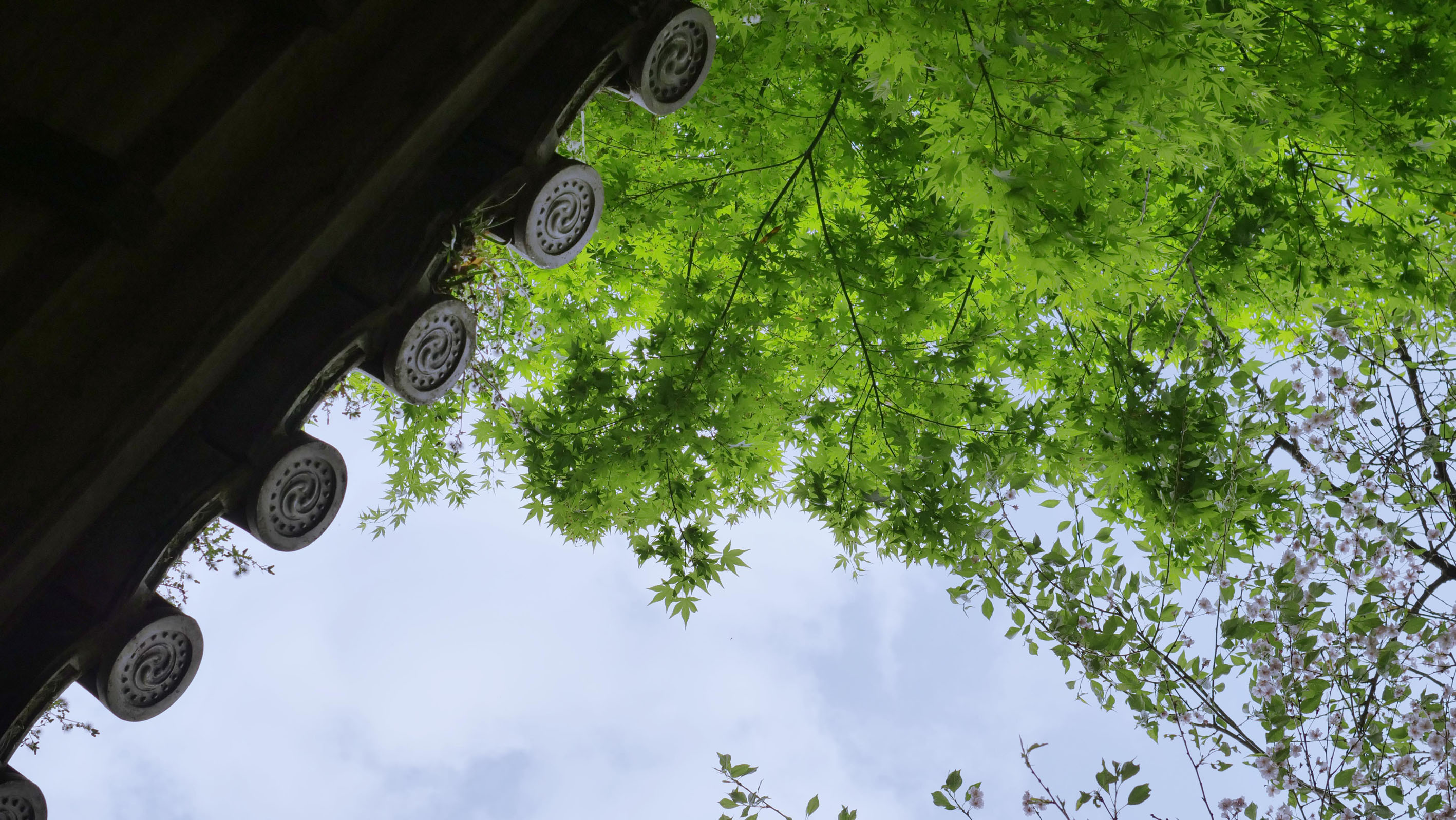
On the way to our accommodation, we stroll through a really beautiful part of Kyoto again and stay on a bridge for a few moments. Here we see the last cherry blossoms of the year. The full bloom is already over for quite a quile, but here and there one can still discover some pale pink flowers.
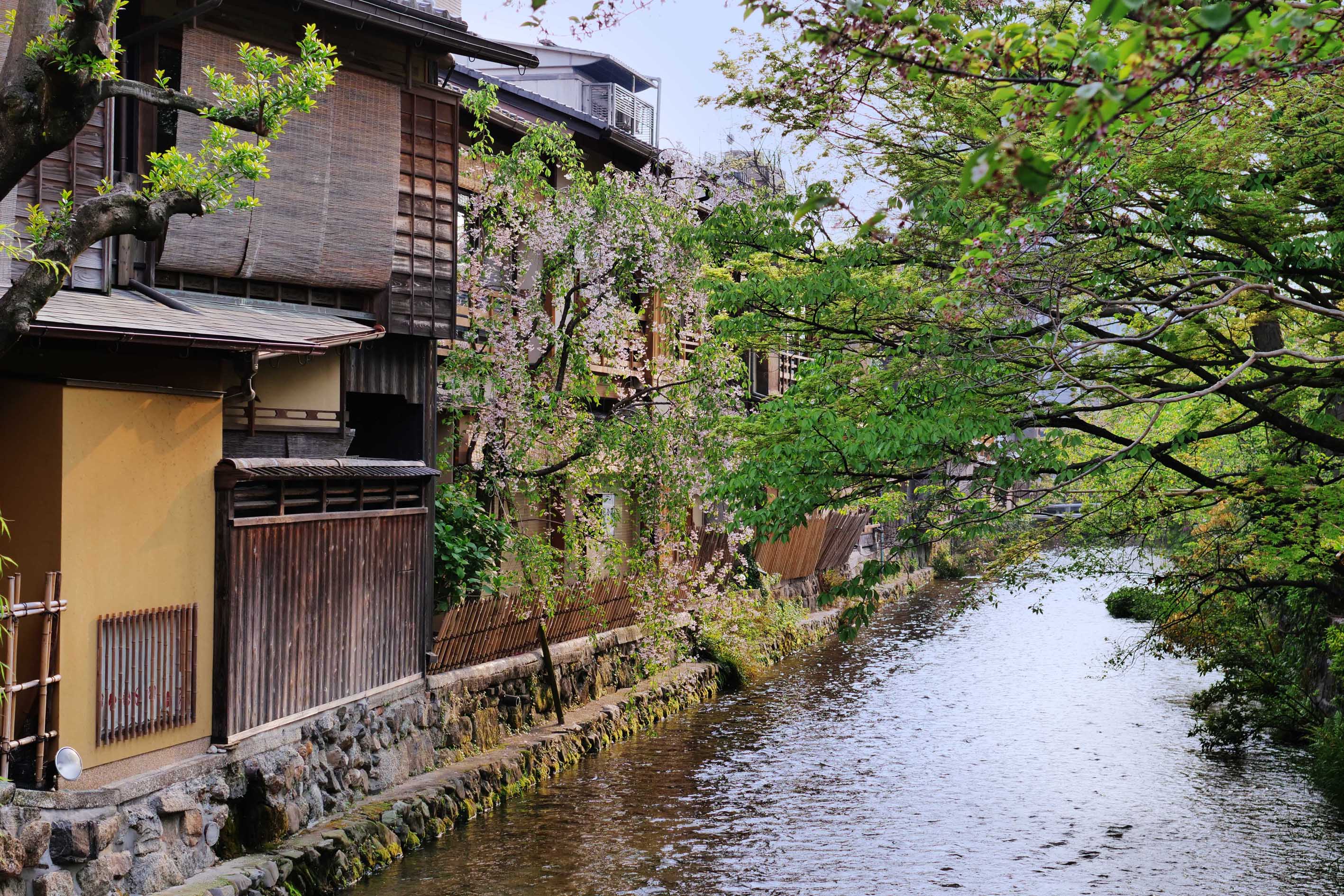
In the evening, we have good news from Haruyo and Shigeru Morimoto: Today they have started the Shincha harvest. Kazuya Matsumoto from Sakura-No En also sends us his time schedule: He plans to harvest the Sakura-No Shincha Moe for us and all Moe lovers in Europe tomorrow. Next week, we will visit these two gardens. Of course we will keep you updated then. For the next three days, we will stay on the main island Honshu, where we will visit the garden of Iwao and Kimihiko Hayashi in Mie, as well as the Suikyo tea garden of Luna and Fumiaki in Nara.